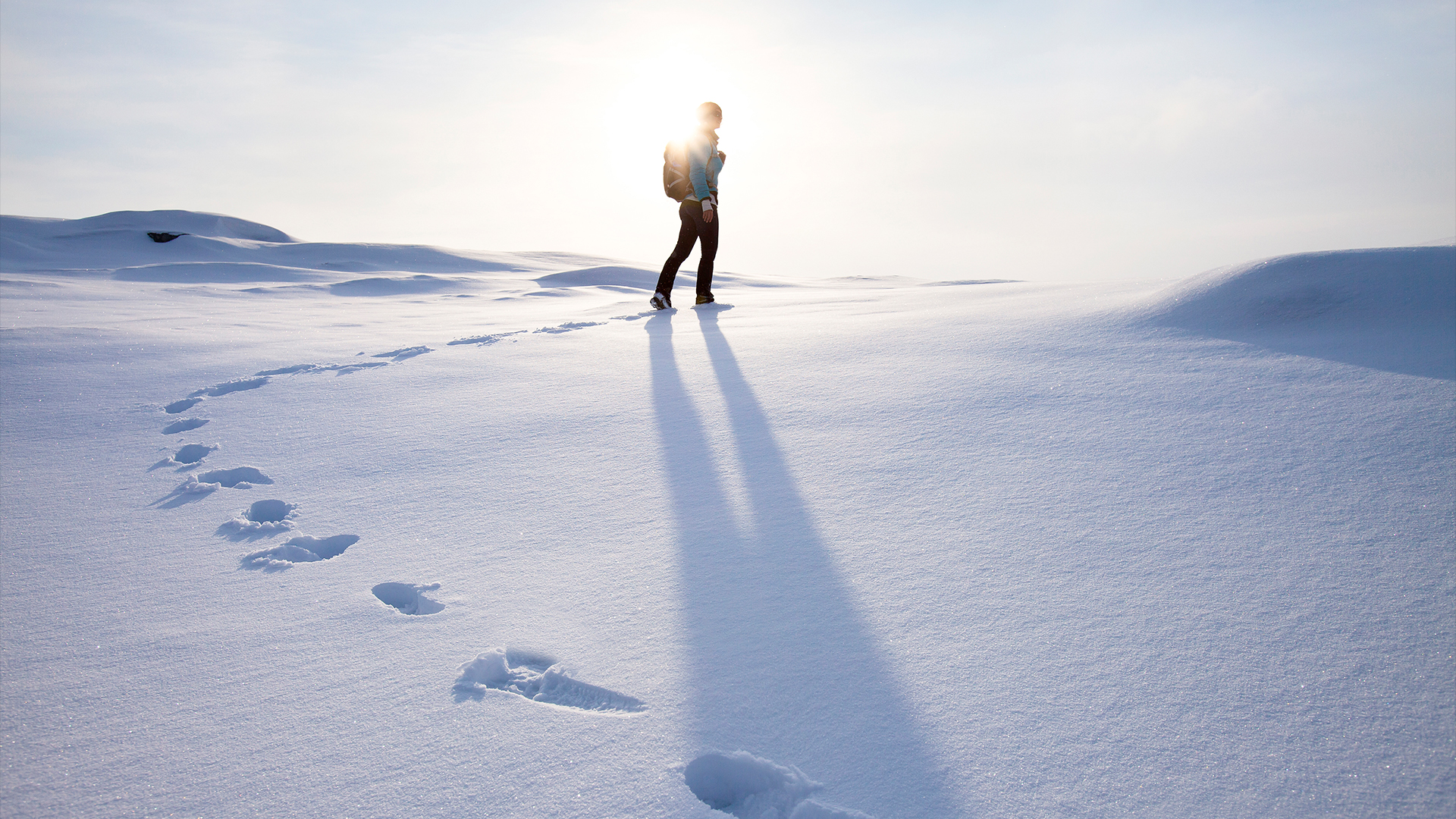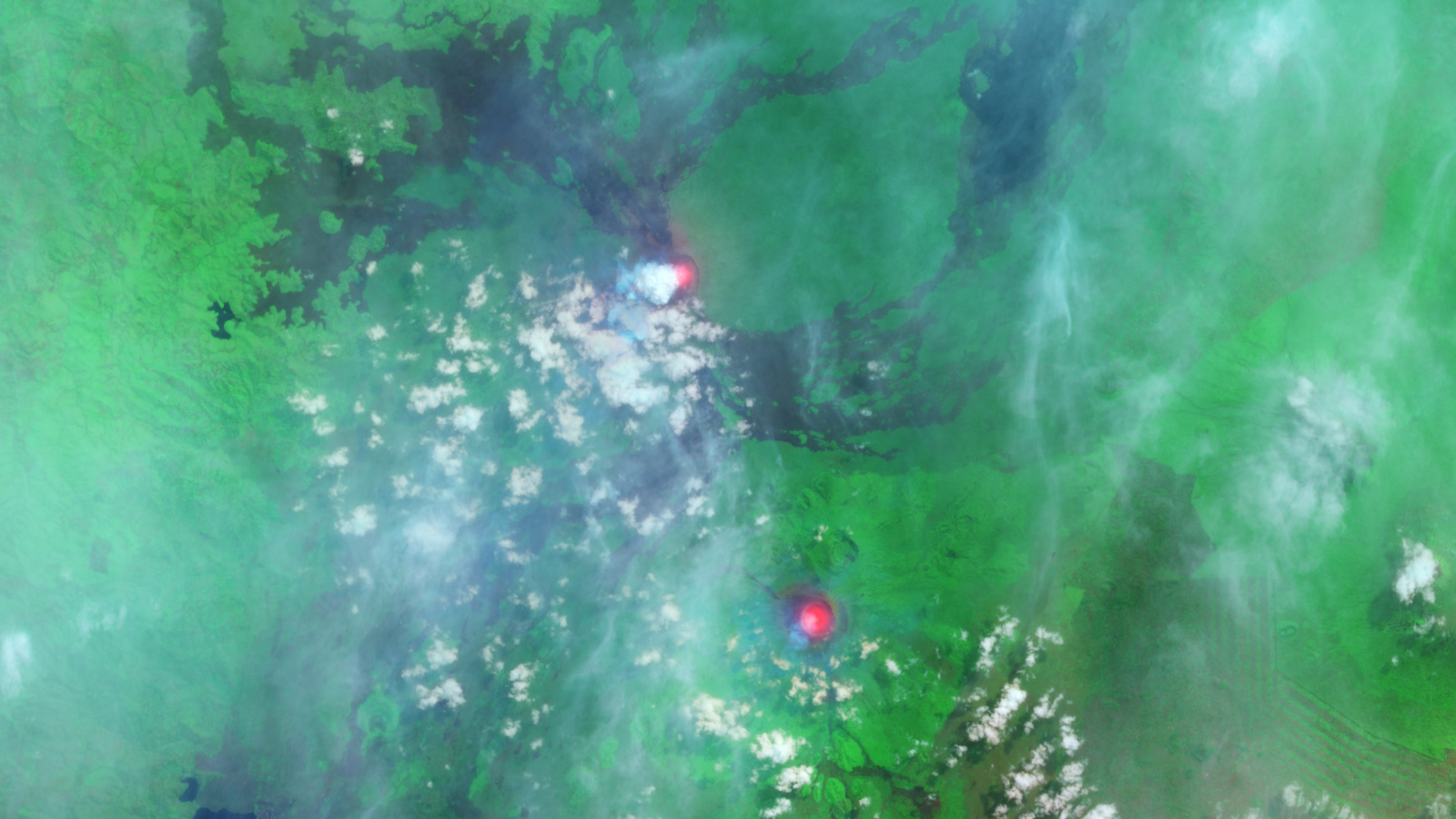
Why does snow squeak when you walk on it?
The science behind why snow crunches underfoot.

Walking in a winter wonderland can be a feast for the senses as you feel the brisk air, see a magnificently white landscape and hear the sound of snow crunching underfoot.
But while much about snow science is well documented, such as how snowflakes get their unique shapes or why snow is white, few scientists have tried to answer why the powdery stuff makes such a satisfying squeak when it's walked on.
To fully understand the cause of the crunch, it's important to know how snow forms. For snow to fall, there needs to be moisture in the air and an atmospheric temperature at or below freezing — essentially 32 degrees Fahrenheit (0 degrees Celsius). Snow forms when water droplets freeze onto a particle, like a speck of dust or pollen. In general, snow will start sticking to the ground if the ground temperature is at least 41 F (5 C), otherwise the snowflakes will begin to melt, according to the National Snow and Ice Data Center.
When enough snow coats the ground, that's when the magic happens, resulting in a symphony of squeaks with each footstep.
So, what causes the sound?
Related: Why does ice float?
"There are a lot of things that are breaking on a very small scale all at once," W. Craig Carter, a professor of materials processing at the Massachusetts Institute of Technology, told Live Science.
Sign up for the Live Science daily newsletter now
Get the world’s most fascinating discoveries delivered straight to your inbox.
Carter's squeak hypothesis likens the process to when a person drags their fingertip across the teeth of a comb.
"Now imagine taking things that are much smaller than the teeth on a comb [such as snow crystals], and think that there are maybe thousands of them [breaking] at the same time," Carter said.
The intricate architecture of the snow is a key factor in the sound it makes when stepped on.
"What is required is that the snowflakes come together and they touch — it's similar to ice cubes in a freezer," he said. "If you leave them in a bowl of ice, they'll begin to stick to each other, and that sticking is something that's called sintering."
Sintering happens as icy "necks" grow between ice crystals, connecting them together like a chunky necklace.
He added, "What I think is happening is these things are coming together and they're sintering just a little bit — or gluing to each other — and so when you step on [snow], you break a whole line of these necks between the particles all at one time."
Carter thinks that temperature plays a role, too.
"When temperatures get just below freezing, the [ice crystals] are coated with something that's like a liquid, and they slide easily," he said. "You won't hear anything at all, because [the particles] are so slippery that nothing will break," he said.
But as conditions get colder and sintering occurs, the likelihood of crunching increases.
Carter says that snow isn't the only thing that crunches underfoot. A similar event occurs with wet sand.
"There's the same kind of squeaking sound," Carter said. "Grains of sand will also stick to each other in the same way, and that's because silica is just a little bit soluble in water, so when two [grains] are barely touching each other, that's a very good point for these adhesions to form."
Jennifer Nalewicki is former Live Science staff writer and Salt Lake City-based journalist whose work has been featured in The New York Times, Smithsonian Magazine, Scientific American, Popular Mechanics and more. She covers several science topics from planet Earth to paleontology and archaeology to health and culture. Prior to freelancing, Jennifer held an Editor role at Time Inc. Jennifer has a bachelor's degree in Journalism from The University of Texas at Austin.










